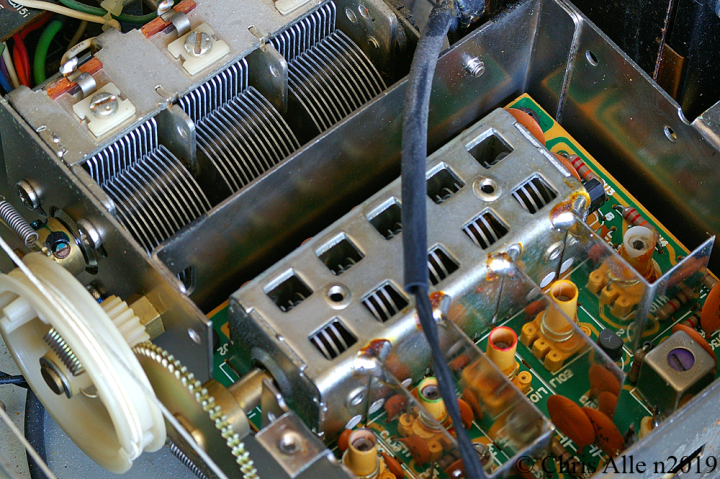I've been mathing and some of the below doesn't make sense. I forgot about the 50k pot the signal goes through to get to the amp. In theory, I should be able to drop the signal amplitude to 0. I'll have to do some poking when I get home. I'll figure this thing out yet!
----
I soldered together the first stage of my Elenco radio kit last night; the amplifier that ramps up the demodulated radio signal to drive the speaker. It passed the static tests from the instruction book like checking current in the circuit with no input, so I moved on to the dynamic tests.
I set my function generator to 400hz and attached it to the amp input. I set my analog VOM to 3 volts and turned the circuit on. Whack; the needle pegged and I jumped to disconnect it. The movement seems ok, but I will remember in the future to start at higher ranges regardless of what the *expected* value is.
I think the problem is not my circuit, but my function generator. The instructions say to set it to the minimum amplitude and I did that, but I think the circuit is expecting millivolts and my generator stops producing below 2 volts PtP. The amplifier took those two volts and shot the output right up to the positive rail of 9+ volts (a fresh 9 volt batter), which is over three times the range on that VOM scale. Oops.
In fact, the instructions say to raise the volume slowly until the amp output is 2 volts PtP, which was what I was already feeding to the input. The gain in this circuit as configured is supposed to be between 100 and 180, so the amplifier was trying to shoot 200 volts minimum into the speaker, stopped by the fact that it can't get more than 9 out of the battery.
So....I might buy myself a nicer function generator and put that together next.
This one for instance; that should do the job a lot better. One reviewer mentions using it at 200mv, so it will go at least that low. Hopefully it'll step down below 100. Maybe I'll ask on Amazon.
----
Ah-ha; here's the full manual. The amplitude resolution is 0.1 volts. With an amp gain of 100, it would step from 0v to 10v to 20v so I think this still wouldn't allow me to do the gain test. Oh well. I think it's safe to assume it works and move on to the next stage.
https://jyetech.com/Products/085/Manual_085F.pdf







